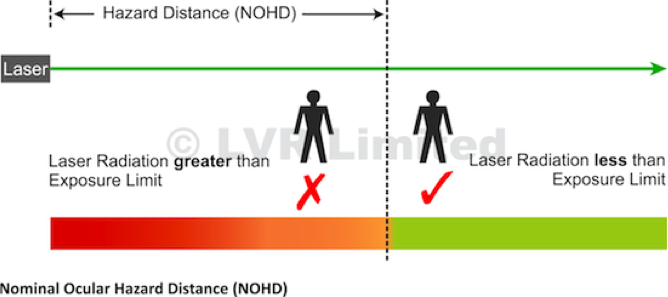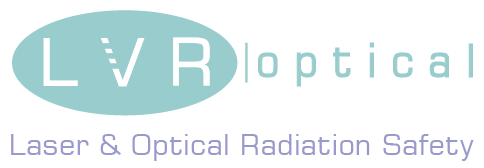
BLOG: Hazard Distance and Hazard Zone
In this article we are going to talk about the importance of knowing a laser’s hazard distance or, to give it the full name, Nominal Ocular Hazard Distance (NOHD). This is the distance at which direct eye exposure to the beam is considered not to be a risk for accidental exposure; the accidental exposure time being 0.25s.

Is NOHD relevant for lightshow applications?
Some users think that because a 0.25s exposure can normally only be created by exposure to stationary beams, it’s not relevant to know the NOHD in a lightshow application. But while it’s true that accidental viewing of static beam is most likely to cause a quarter-second exposure, there are other instances that cause a similar exposure dose. e.g. slow moving beams, ‘beam-zap/chase’ effects, which remain momentarily stationary to accentuate the effect, and, of course, stationary beam effects, such as those on laser array fixtures etc.
But even if none of these effects are used, the NOHD becomes particularly important during the installation phase of lightshow, where alignment and the effect’s focus takes place. During this phase of the install, there is a much greater chance of static beams being emitted than at show time, when everything has been set. Knowing the hazard distance is important for established the hazard zone associated with the laser; which is the area enclosed by the imaginary arc created by the NOHD. For example, if you determined the NOHD for a laser to be 200m, the hazard zone is anywhere with a 200m arc from the laser source. Knowing the area affected by the hazard zone allows you to consider what precautions must be taken to ensure people within that zone are not put at risk.
How is NOHD influenced?
Two main characteristics of a laser beam affect how long the hazard distance will be. These are the output power, and the beam divergence.
Most visible lasers contain harmful quantities of energy, which is why even with low-power office laser pointers there are warnings not to look directly into the beam.
All laser beams contain energy that spreads out as the light projects further from its source. The rate at which the light spreads is known as beam divergence. A low divergence beam means the spread of the beam is low, so it remains tight over a long distance. While a high divergence beam spreads out much quicker. Beams with low divergence are normally considered desirable for lightshow applications because the beams stay pencil-sharp over long distances.
In terms of exposure risk, if two beams have the same power output, but one beam is low divergence, and the other is higher divergence, the beam with the lower divergence remains a risk over a greater distance than the higher divergence beam. This is because the density of energy in the beam remains higher for longer, increasing the distance for which that beam can be a risk.
© 2017 LVR Optical
